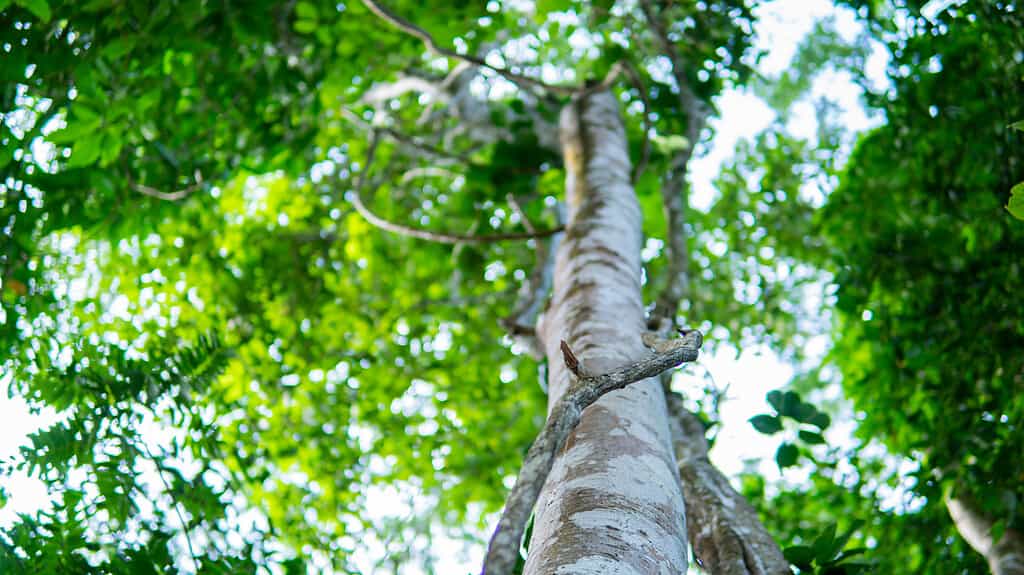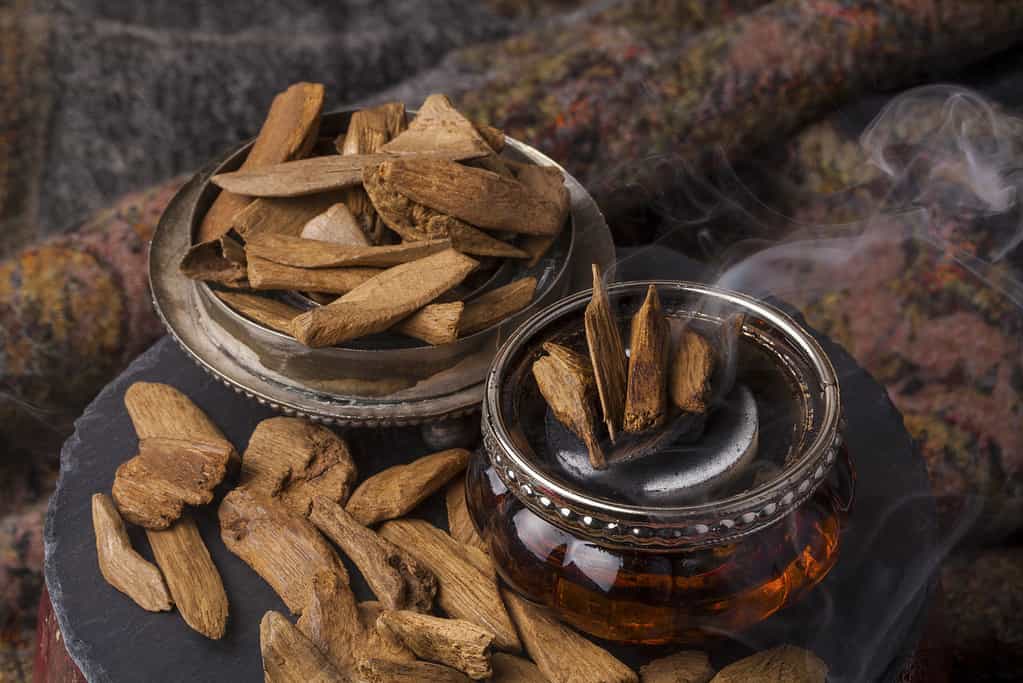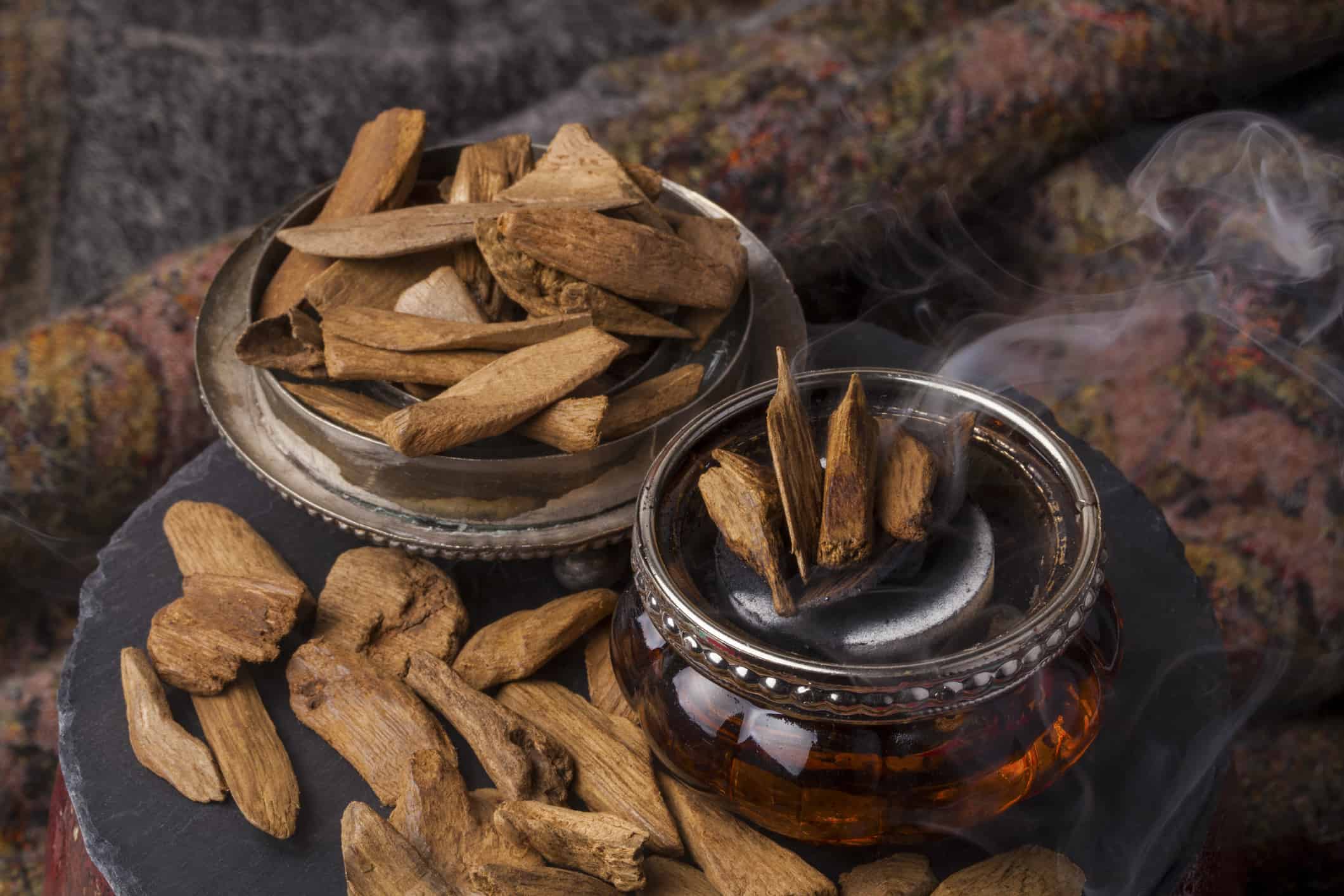Wood is generally known to be inexpensive, so it’s surprising to discover that some types of wood can cost thousands of dollars. Agarwood is one type of wood with a hefty price tag. If you’re wondering what’s so special about this wood to make it so costly, check out the rest of this article for the answers.
What Is Agarwood?

Agarwood doesn’t have much of an aroma until the tree produces a resin in defence to mold.
©superoke/iStock via Getty Images
Agarwood has many names in various cultures, such as aloeswood, eagleswood, or oudwood. Scientifically, agarwood is known as Aquilaria spp. Agarwood is harvested from Aquilaria trees, which naturally grow in the tropical rainforests of Southeast Asia. There are about 17 species of Aquilaria trees belonging to the family Thymelaeceae.
Aquilaria trees grow well in gravel or red basalt soil, which naturally occurs in Southeast Asian tropical conditions. The Aquilaria malaccensis species is a rare and protected type of Aquilaria tree that is valued for its fragrant agarwood. Though it’s one of the primary sources of agarwood, Aquilaria malaccensis lacks aroma without being infected by a type of Phialophora mold first.
Agarwood forms in the heartwood of the Aquilaria trees once infected with the mold, P. parasitica. Once infected, the trees secrete a resin to defend themselves. This resin is responsible for agarwood’s strong, perfume-like aroma. It can take up to two decades for agarwood to develop this expensive fragrance.
How Much Does Agarwood Cost?
Agarwood is often referred to as the most expensive type of wood in the world. This wood usually sells for a whopping $45,000 per pound or $100,000 per kilogram. This price is typical of first-grade agarwood, one of the most expensive raw materials in the world. Lower-grade agarwood and its oils sell for much less, sometimes a mere $45 per pound or $100 per kilogram.
Why So Expensive?

First-grade agarwood is an expensive raw material that is highly valued in various industries.
©fotomem/iStock via Getty Images
Agarwood is expensive because it is in high demand, but the number of Aquilaria trees producing it is declining. The major source of agarwood, A. malaccensis, is critically endangered according to the IUCN Red List. One of the tree’s main threats is unregulated harvesting for its expensive aromatic agarwood. Furthermore, A. malaccensis faces habitat loss due to fires and mining.
It doesn’t help that this tree has a low germination rate, so it cannot grow and reproduce quickly. Plus, harvesting agarwood is labor intensive and specialists spend a great deal of time searching for it.
What Is Agarwood Used For?
Agarwood has numerous uses in traditional medicine and the perfume and incense industries. It has also been used for religious rituals, hence its nickname “the wood of gods”. In traditional medicine, agarwood is believed to treat several skin diseases and thyroid cancer.
The wood’s signature scent is irreplaceable in various scented oils, perfumes, and soaps. Agarwood gives off a complicated fragrance that not everyone enjoys, but it is incredibly unique and difficult to replicate. Its scent is often described as woody and musky with a hint of vanilla and tobacco. Agarwood is also used in aromatherapy, as it’s believed to have a calming effect.
Wrapping It Up
Aquilaria trees produce aromatic agarwood once infected with a type of mold, prompting the injured trees to secrete a resin, leading to its signature scent. You can expect first-grade agarwood to sell for a couple of thousand dollars. Its uses have deep roots in traditional medicine, but it is commonly harvested by the incense and perfume industries.
Thank you for reading! Have some feedback for us? Contact the AZ Animals editorial team.








